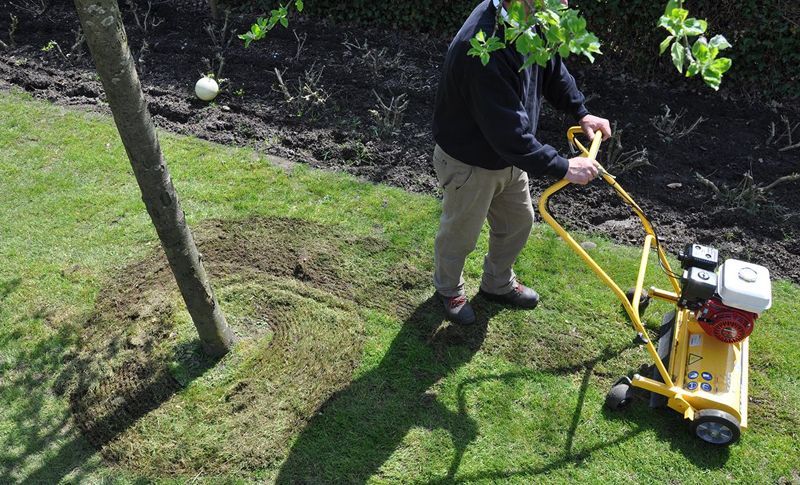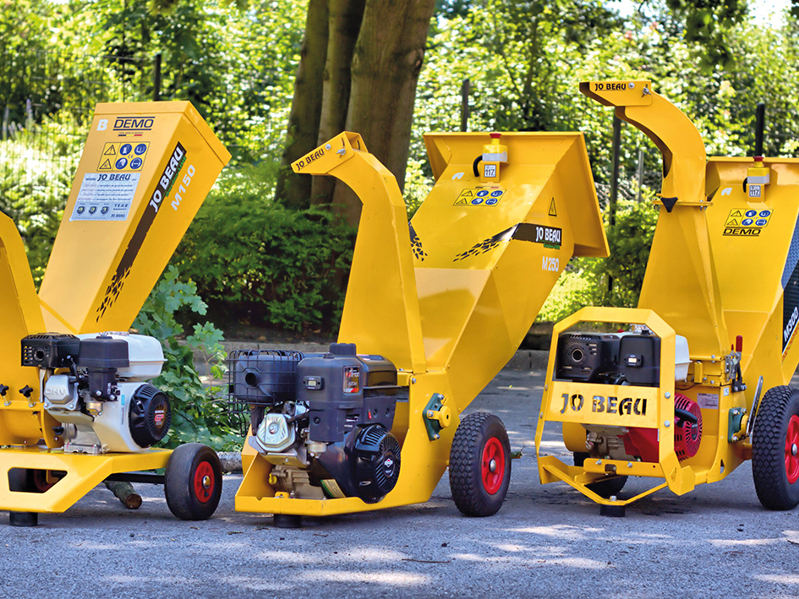Why scarify my lawn?
Friday 02 August 2019
In order to grow well, grass needs oxygen, water and nutrients. By scarifying the lawn twice a year, you ensure that the grass is well ventilated and that the nutrients can penetrate the soil well. We will explain to you what is the best way to do this and which period of the year is most suitable for this.
I . What is scarifying?
- In the course of time, a layer of felt will develop in the lawn. Moss, lawn fungus and weeds cause the lawn to lose its quality. This layer of felt consists of dead grass particles that are left behind on the lawn after mowing and of mosses that grow on it. This layer of felt will become thicker and thicker over time, which will prevent oxygen, fertilisers and water from penetrating the soil. This will suffocate your lawn and, if ignore it, it will turn yellow and eventually die. You'll have more moss than grass. Scarifying means mechanically (with a scarifier rake or dethatcher) removing the old felt layer from the grass. This allows the turf to be well ventilated so that it can absorb nutrients and start growing again.
II . Manual or machine scarifying?
- A Jo Beau dethatcher is highly recommended, especially for larger grass areas. The solid, yet very user-friendly device saves you a lot of hard work. It also cuts the bottom evenly deep, resulting in a nice, even result. The Jo Beau V460 pulls itself over the lawn by the force of the blades and ensures the necessary flexibility and stability by means of the swivel wheels on the unit.
In case of a small surface area, you can certainly opt for a scarifier rake to carry out the work manually.
III . When and how often to scarify?
- Grass has two important growth periods per year: April/May and September/October.
We recommend that you start scarifying just before these periods, because that will allow the grass to recover well. For this reason: April and early September/October.
Depending on the condition of the lawn, you can choose to scarify once or twice. If you want to prepare the lawn well for the winter and remove the moss accumulated in the summer period, you can opt to scarify a second time in September/October.
IV . How to scarify a lawn?
- Preparation: Make sure that the weather is dry and frost-free. If necessary, lime should be sprinkled beforehand in order to reduce the acidity of the soil. Cut the grass at a height of 2 to 3 cm and test the depth setting of the Jo Beau dethatcher on a healthy piece of grass.
- Execution: The 42 Greenknives® knives cut vertically cut moss and felt from between the grass, but require a crosswise operation: once in the length of the lawn and once in the width of the lawn. This way, no spots will be skipped.
- Recovery: After scarifying, carefully collect all green waste using a fine rake. Jo Beau does not offer a container as it will quickly fill up after a few metres of scarifying and emptying the container will take more time than the scarifying process itself. After scarifying and clearing, it is advisable to fertilise the lawn to feed the soil and the open areas can also be re-sown.
More info about the Jo Beau V460 scarifier can be found here.



